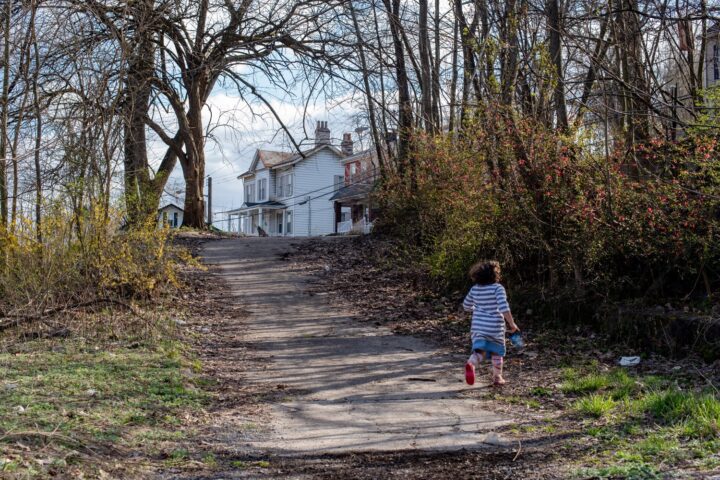
View of Nockamixon State Park
On August 15, Natural Lands announced the conservation and transfer of 59 acres of formerly private land to the Commonwealth of Pennsylvania. The land will now be available for public use and forever protected from development.
The first property is an eight-acre parcel owned by the Keller family and is immediately adjacent to Nockamixon State Park in Haycock Township, Bucks County. Using the Highlands Act to obtain funding, Natural Lands acquired the property last month and then immediately transferred ownership to the Pennsylvania Department of Conservation and Natural Resources (DCNR). The Highlands Act authorizes the Department of the Interior, through the U.S. Fish and Wildlife Service, to provide federal matching grants to support the agencies in purchasing land, or an interest in land, from willing sellers. Congress appropriates funding annually under the Land and Water Conservation Fund. Nockamixon State Park draws thousands of visitors every year to its hiking and biking trails, diversity of birds and other wildlife, and large lake used for boating, paddle-boarding, and fishing. Now part of the park, the Keller property will be open to visitors for recreation.
“This acquisition fills a longstanding inholding and will further conserve Nockamixon State Park’s natural resources and provide protective enhancements to the park boundary in a region with significant development pressure around our public lands,” said John Hallas, director of the DCNR Bureau of State Parks. “We are pleased that this new parcel will provide expanded recreation opportunities to the citizens of the Commonwealth at this already very popular destination park in Bucks County.”
The second property is a 51-acre parcel adjacent to the George W. Wertz tract of William Penn State Forest in South Heidelberg Township, Berks County. Forested land like this property offer essential environmental services like cleaning the air, filtering sediment and other pollutants from the watershed, slowing stormwater during major rain events to reduce flooding, and storing carbon. William Penn State Forest is open to visitors and a popular destination for hunting, hiking, and bird watching.
“This property was in my late husband’s family for three generations,” said Darlene Staudt, former owner. “His grandfather used to take him hunting there. I went hunting one time and couldn’t shoot the animals. I told him, ‘I’ll shoot with my camera from now on!’”
She added, “I know it would make my husband, Phil, happy to know it will be a forest forever.”
Natural Lands once again used funding from the Highlands Act, as well as the Community Conservation Partnership Program (C2P2) administered by the Pennsylvania Department of Conservation and Natural Resources Bureau of Recreation and Conservation.
“In an area of the state where it is needed most, Natural Lands has emerged as one of this department’s strongest allies when it comes to land protection,” said DCNR Secretary Cindy Adams Dunn. “Increased public access, watershed protection, expansion of a most popular state park, and a growing state forest—it’s all there in this transfer of these two tracts.”




